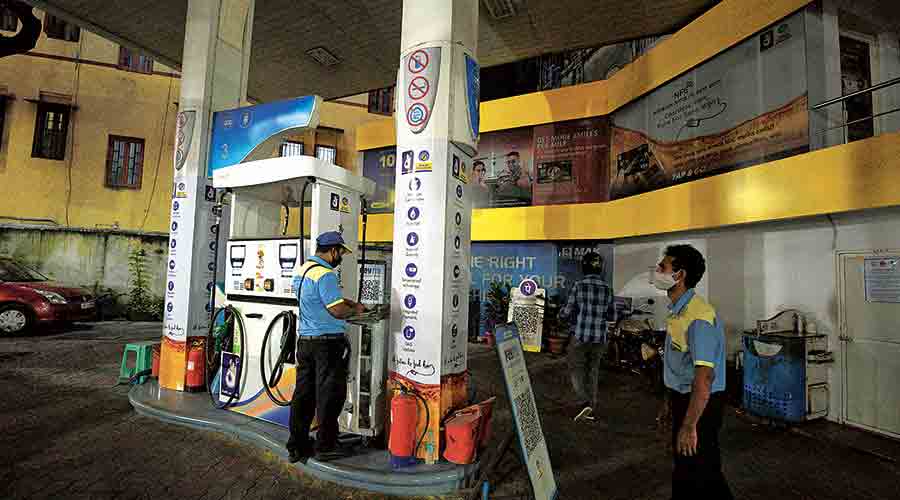Survival, not profit, has emerged as the big challenge, cabbies and transporters said as the price of diesel breached the Rs 100-per-litre mark in Kolkata on Thursday.
The fuel sold at Rs 100.14 per litre at Indian Oil pumps in the city, following a 36-paise hike overnight. The price varied by a few paise in Hindustan Petroleum and Bharat Petroleum pumps.
Diesel scored a century 113 days after petrol touched the Rs 100-a-litre mark in the city.
On Thursday, The Telegraph spoke to people scalded by the rising diesel prices.
Transporter
A mini-truck refilled around 10 litres of diesel at a BP pump in Alipore on Thursday afternoon.
Sitting beside the driver was Gautam Majumdar, owner of the Tata Ace. Majumdar is a contractor with the public health engineering department of the Bengal government.
“Ei bhabe cholle pothe bose jabo (I will be reduced to penury if this continues),” he said of the rising price of diesel.
His vehicle ferries equipment needed for construction of water pipes in multiple districts. That means travelling over 300km on most days.
“Before the pandemic, for every Rs 100 I earned, my profit was Rs 35. Now, It has come down to Rs 20. The dip in profit would have been manageable if the income and other expenses increased proportionately. But while the expenses have shot up, the income has not. Now, the survival of business has become challenging,” he said.
App cab
Scores of app cabs were parked on the Tollygunge-bound flank of SP Mukherjee Road around 2pm on Thursday. The drivers were taking part in a mass-signature campaign against the rising fuel prices, organised by Citu, the labour arm of the CPM.
Ananta Roy, owner of a Hyundai Xcent, was one of them. Roy drives the car himself, leaving home at 7.30am and returning around 8.30pm.
Just before the lockdown in 2020, when diesel cost less than Rs 70 per litre, Roy used to drive around 150km every day. Even after the aggregator’s cut, he would take “around Rs 2,500” home on an average day.
“Now, I usually don’t drive beyond 100km a day. But after the aggregator’s cut, which has increased manifold, I can take home barely Rs 1,500,” he said.
Rising expenses mean he is left with “almost zero savings”. His main worry — arranging money for any “emergency”.
An EMI of Rs 13,000 for the car is a major component of his fixed expenses. He lives with his wife and two daughters, aged 16 and 14. “We have curtailed on non-vegetarian food. But seasonal vegetables are so costly that there is no respite,” said Roy.
Yellow taxi
Ranjit Choudhury, driver of a yellow taxi, drove into a pump on CR Avenue for a diesel refill. He drives around 100km every day and needs about 10 litres of diesel. He goes without any passenger for at least 20km.
Under such circumstances, Choudhury earns around Rs 1,000 every day. His daily income is similar to his daily fuel expenses. But if other sundry expenses and the owner’s daily commission are added, his daily expenses exceed his daily income.
